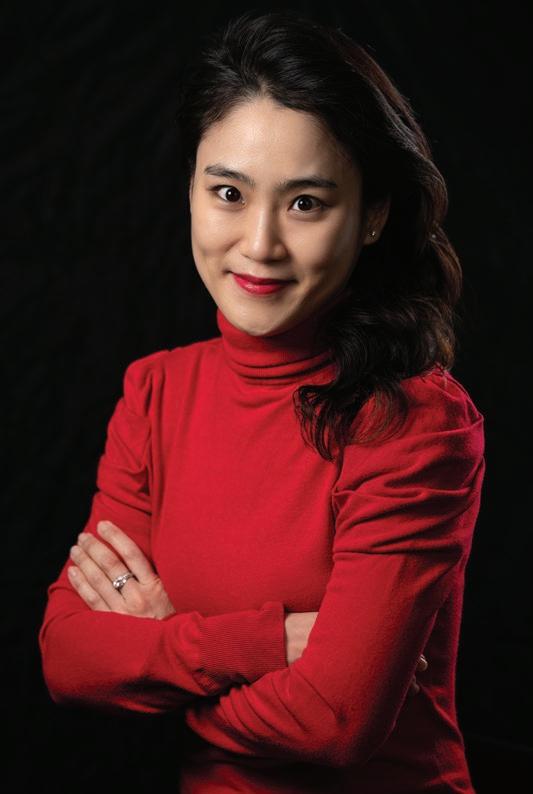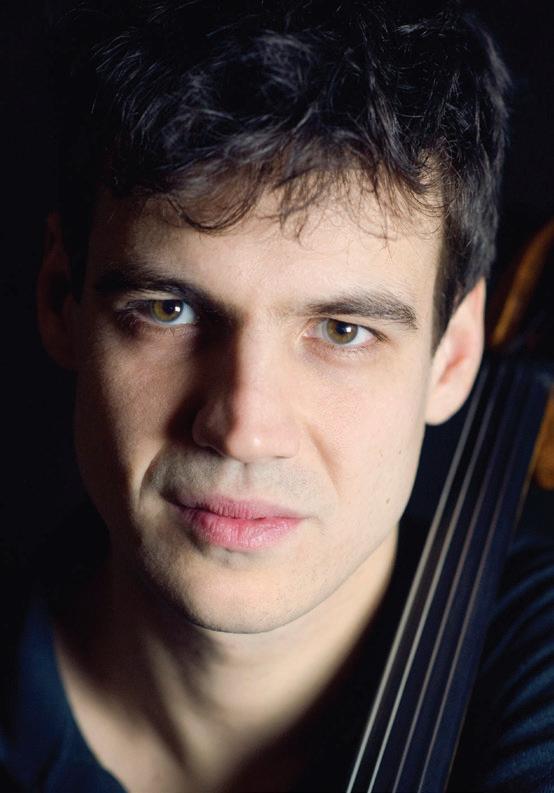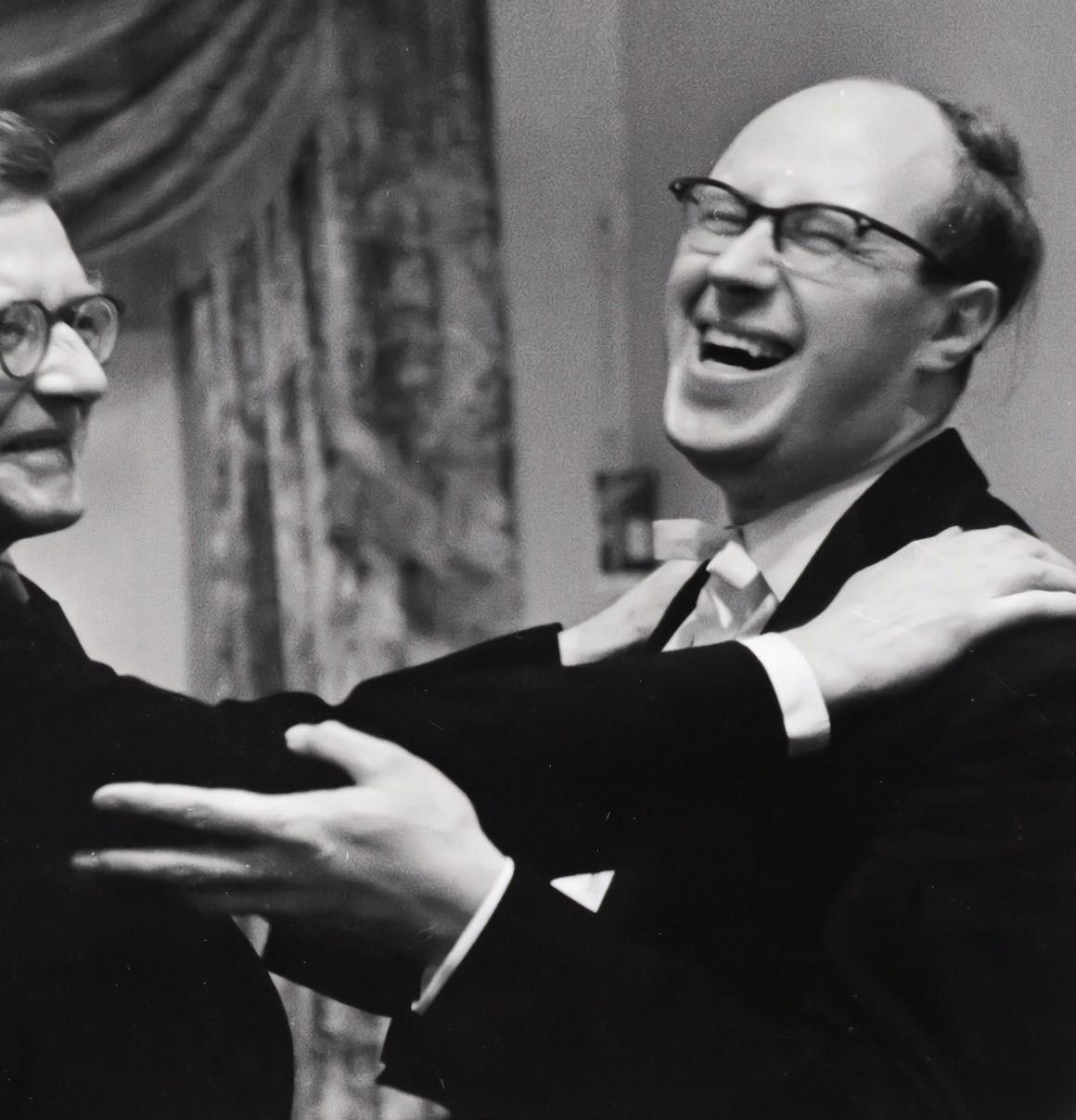

Han-Na Chang - conductor

Born: Suwon, South-Korea
Current position: Artistic Director Trondheim Symphony Orchestra, Principal Guest Conductor Hamburg Laeiszhalle Orchestra Before: Artistic Director Qatar Philharmonic Orchestra
Education: first piano lessons at age three, cello lessons from age six, Juilliard School of Music (New York), private lessons with Mischa Maisky and Mstislav Rostropovich, study Philosophy at Harvard University, conducting lessons with James DePreist
Awards: First Prize and Contemporary Music Prize at the Rostropovich International Cello Competition (1994), Grammophone Classical Super-star of Tomorrow (2006) Breakthrough as a conductor: 2012, debuts with Philharmonia Orchestra and Royal Liverpool Philharmonic, appointment in Qatar

Subsequently: Staatskapelle Dresden, Bamberger Symphoniker, Royal Stockholm Philharmonic Orchestra, Oslo Philharmonic Orchestra, Minnesota Orchestra, symphony orchestras of Tokyo, Toronto, Gothenburg, Cincinnati, Seattle Debut Rotterdam Philharmonic: 2022
Victor Julien-Laferrière - cello
Born: Paris
Education: cello lessons from age seven, study at the Conservatoire national supérieur (Paris) with Roland Pidoux, in Vienna with Heinrich Schiff, in Salzburg with Clemens Hagen Awards: First Prize Prague Spring International Competition (2012), First Prize Queen Elisabeth Competition Brussels (2017), Victoire de la Musique Best Instrumental Soloist (2018)
Solo-appearances: Royal Concertgebouw Orchestra, Orchestre National du Capitole de Toulouse, Orchestre de Paris, Deutsches Symphonie-Orchester Berlin, Les Siècles with conductors such as Stéphane Denève, Maxim Emelyanychev, Valery Gergiev, Françoix-Xavier Roth, Tugan Sokhiev and Nathalie Stutzmann
Chamber Music: Concertgebouw Amsterdam, Konzerthaus Wien, Théâtre des ChampsElysées, Tonhalle Zürich, Sommets Musicaux de Gstaad, Rheingau Musik Festival
Instrument: cello by Domenico Montagnana, bow by Dominique Peccatte Debut Rotterdam Philharmonic: 2022
Photo: Jean-Baptiste Millot Photo: Ole WuttudalPROGRAMME
conductor Han-Na Chang
cello Victor Julien-Laferrière
Sergei Prokofiev 1891-1953
Symphony no. 1 in D Major, op. 25 ‘Classical’ [1916–17]
• Allegro
• Larghetto
• Gavotte: Non troppo allegro
• Finale: Molto vivace
Dmitri Shostakovich 1906–1975
Cello Concerto no. 1 in E-flat Major, op. 107 [1959]
• Allegretto
• Moderato
• Cadenza –
• Allegro con moto
Intermission
Ludwig van Beethoven 1770-1827
Symphony no. 3 in E-flat Major, op. 55 ‘Eroica’ [1803–04]
• Allegro con brio
• Marcia funebre: Adagio assai
• Scherzo: Allegro vivace
• Finale: Allegro molto
Concert ends at around 22.15 / 16.15
Most recent performances by our orchestra:
Prokofiev Symphony no. 1: Dec 2018, conductor Lahav Shani Shostakovich Cello Concerto no. 1: Jan 2020, cello Gautier Capuçon, conductor Valery Gergiev Beethoven Symphony no. 3: Oct 2017, conductor Yannick Nézet-Séguin
One hour before the start of the concert, Gijsbert Kok will give an introduction (in Dutch) to the programme, admission €5. Tickets are available at the hall, payment by debit card. The introduction is free for Vrienden.
Cover: Photo Alfred Kenneally.
Before the revolution, and after
Forty years of revolution and Stalinist oppression separate Prokofiev’s almost innocent Classical Symphony and the revealing First Cello Concerto of Shostakovich. Beethoven’s Eroica symphony also fell under the shadow of a dictator - Napoleon Bonaparte – to whom the symphony was expressly not dedicated.
Classical but a bit rebellious
Sergei Prokofiev enjoyed poking fun at music critics and much preferred hostile reviews to those that sang the praises of his music. Undoubtedly, he would have loved the response of Louis Arntzenius to a performance of his First Symphony in Amsterdam as part of the composer’s concert tour in December 1925. Writing in Dutch newspaper De Telegraaf, Arntzenius encapsulated his impressions of the work as follows: ‘The Classical Symphony is a charming score. It wouldn’t harm a fly anywhere in the concert hall, let alone a paying member of the audience.’ After listing all manner of musical deficiencies he concluded that even Haydn was a more modern composer, ‘and by a long chalk’.
Arntzenius was not the only one to dismiss Prokofiev’s foray into the world of ‘traditional’ classical music. With the premiere of his
First Piano Concerto in 1912, the then 21-year-old music student had positioned himself at the forefront of Russian avant-garde music. And just as everyone was getting used to the fact that Prokofiev wasn’t the sort of composer to honour the principles of the classical form, and instead allowed his themes to undergo unrecognisable transformations, he suddenly – so it seemed – veered off the course he had set. With his First Symphony he surprised his fans and critics alike.
However, that wasn’t quite how Prokofiev saw it. For him this was a musical experiment to imitate the style of the Viennese classical school. He was convinced that ‘If Haydn had been living today, he would have kept his compositional style whilst picking up ideas from the new forms of music.’ But since Haydn was no longer around to do just that, Prokofiev would compose a Dmitri Sjostakovitsj (links) en Mstislav Rostropovitsj, circa 1960.
symphony for him: classical, but with a modern twist; tonal, but with enough dissonance to give the work as a whole a twentieth century sound.
The four-movement symphony is, of course, ‘charming’: Arntzenius was right to that extent. The free-spirited Allegro of the first movement speeds by like a whirlwind. In the Larghetto the composer adheres to the rules dictating the style of a minuet, with its delicate steps and courteous movements. The light and gracious theme exaggerates the deep bows and curtsies of imaginary dancers. A charming, glittering Gavotte incorporating an Alberti bass line with sharp accents, would be re-serviced and expanded by Prokofiev for his ballet Romeo and Juliet. The closing movement of the symphony is as scintillating as its opening, with a spirited finale in rondo-sonata form.
The work was first performed on 21 April 1918 in the cold and hungry city of Petrograd. The violence of the October Revolution in the months preceding the premiere had convinced Prokofiev to leave his homeland as soon as possible. And so this first performance of his Classical Symphony was also his unofficial farewell concert: a few days later, with a coveted exit visa in his hands, the composer boarded a train for the first part of his journey to America.
Long-awaited commission
Around forty years later, in July 1959 – in an unrecognisably altered Russia - Dmitri Shostakovich premiered his First Cello Concerto. For decades the feared Joseph Stalin had held his country in a steel-like grip. Now, six years after his death, the country was experiencing a political and cultural thaw.

Political changes were also securing the rehabilitation of Shostakovich, whose music had been harshly criticised under Stalin. Press attacks, and accusations of musical complexity, formalism, and subjectivity, vanished from the front pages like snow under a hot sun. The composer became increasingly regarded as an official standard-bearer for Soviet music, upon whom was showered awards and appointments.
It was in this relatively mild climate that Shostakovich wrote a four-movement cello concerto, full of contrasts. He dedicated the work to Mstislav Rostropovich, who for years had been secretly hoping for a new cello work from the composer. The renowned cellist was so delighted with the composition that he learned the score by heart inside four days. Rostropovich’s enthusiasm for this cello concerto is entirely understandable. The first movement is all challenge and daring. It serves as a musical prologue for the lyrical Moderato and the seamless introduction of the Cadenza, an impressive solo passage of no less than 148 bars. What follows is an ironic finale, a sharp and sarcastic burlesque, given added zing with a knowing nod to the melody of Stalin’s favourite Georgian song Soeliko.
Musical heroism
Beethoven was a composer of the grand gesture. He had deep admiration for the inspiring leaders and heroes of antiquity and more recent history. He originally intended to dedicate his Third Symphony to Napoleon, to honour this ‘liberator of Europe’ with a heroic score worthy of his deeds. But when Napoleon crowned himself Emperor, in the eyes of Beethoven that sent him crashing from his pedestal. Embittered, he crossed out
Napoleon’s name from the title page of the score; he instead dedicated the symphony to his rather less illustrious, but more trustworthy, patron, Prince Lobkowitz. All that remained by way of reference to the new emperor was Beethoven’s inscription: ‘a heroic symphony, composed to celebrate the memory of a great man’.
The first public performance of
the symphony in Vienna on 7 April 1805 was not a success. The music was criticised as being boring, incoherent, and –moreover – endless. With regard to the last point of criticism, the critics did indeed have a point. At around fifty minutes, the new symphony was the longest yet written. Only much later did the public begin to appreciate the immensity of Beethoven’s musical ideas. This overwhelming
work proved to be more than a succession of thunderous chords and long drawn-out thematic developments. The music brims with energy and enthusiasm for life. The Allegro con brio, complex and full of rhythmic changes, introduces an impressive theme that the composer is able to develop for a full 246 bars. The tragedy in the famous Marcia funebre (funeral march) also leaves room for hope and joy. The
sparkling scherzo that ensues is seamlessly followed by a triumphant, glorious finale. Even with Napoleon out of the picture, Beethoven’s symphony forms a titanic interplay of changing and contrasting colours, timbres, and sounds.
 Olga de Kort
Dmitri Shostakovich (left) and Mstislav Rostropovich, around 1960.
Olga de Kort
Dmitri Shostakovich (left) and Mstislav Rostropovich, around 1960.
Agenda
Fri 18 November 2022 • 20.15
Sun 20 November 2022 • 14.15 conductor Adam Hickox viola Lawrence Power Ravel La valse Schnittke Viola Concerto Elgar Enigma Variations
Thu 24 November 2022 • 20.15
Fri 25 November 2022 • 20.15 conductor Lahav Shani piano Yefim Bronfman Beethoven Piano Concerto no. 3 Bruckner Symphony no. 9
Fri 9 December 2022 • 20.15
Sun 11 December 2022 • 14.15 conductor Jukka-Pekka Saraste clarinet Christoffer Sundqvist Wennäkoski Flounce Nielsen Clarinet Concerto Shostakovich Symphony no. 8
Fri 16 December 2022 • 20.15
Sun 18 December 2022 • 14.15
conductor Jan Willem de Vriend soprano Lucy Crowe tenor Mauro Peter baritone Christopher Purves choir Laurens Symfonisch Haydn Die Schöpfung
Thu 22 December 2022 • 20.15
Fri 23 December 2022 • 20.15 conductor Yannick Nézet-Séguin choir Nationaal Kinderkoor Tchaikovsky The Nutcracker
Thu 12 January 2023 • 20.15
Fri 13 January 2023 • 20.15
Sun 15 January 2023 • 14.15 conductor Lahav Shani piano Daniil Trifonov Beethoven Piano Concerto no. 1 Strauss Ein Heldenleben
Chief Conductor Lahav Shani
Musicians
Honorary Conductor Yannick Nézet-Séguin
Principal Assistent Conductor Bertie Baigent
First Violin Igor Gruppman, leader
Marieke Blankestijn, leader
Quirine Scheffers Hed Yaron Meyerson Saskia Otto Arno Bons
Mireille van der Wart Cor van der Linden Rachel Browne Maria Dingjan Marie-José Schrijner Noëmi Bodden Petra Visser Sophia Torrenga Hadewijch Hofland Annerien Stuker Alexandra van Beveren Koen Stapert
Second Violin Charlotte Potgieter Cecilia Ziano Frank de Groot Laurens van Vliet Tomoko Hara Elina Staphorsius Jun Yi Dou Bob Bruyn Letizia Sciarone Eefje Habraken Maija Reinikainen Sumire Hara
Wim Ruitenbeek Babette van den Berg Melanie Broers
Viola Anne Huser Roman Spitzer Maartje van Rheeden Galahad Samson Kerstin Bonk Lex Prummel Janine Baller Francis Saunders Veronika Lénártová Rosalinde Kluck León van den Berg Olfje van der Klein
Cello Emanuele Silvestri Joanna Pachucka Daniel Petrovitsch Mario Rio Gé van Leeuwen Eelco Beinema Carla Schrijner Pepijn Meeuws Yi-Ting Fang
Double Bass Matthew Midgley Ying Lai Green Jonathan Focquaert Robert Franenberg Harke Wiersma Arjen Leendertz Ricardo Neto Flute
Juliette Hurel Joséphine Olech Désirée Woudenberg
Flute/Piccolo
Beatriz Da Baião
Oboe
Remco de Vries Karel Schoofs Anja van der Maten
Oboe/Cor Anglais Ron Tijhuis
Clarinet
Hervé
Bonansea
Jansen
Clarinet
Wijmenga
Nuytten
Descours
Prommel
Wisse
Fernández
Leliveld
Speetjens
Otto
Buizer
Trumpet
Wierenga
Volders
Verbeek
de Jager
Trombone
Groenhof
Renes
Max
van de Wal
Ent
Boom
Feyaerts
